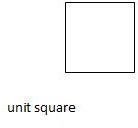Finding the Area of Figures using Unit Squares: Grade 3 Math Lesson
Without overlapping or leaving gaps, cover the geometric figures (squares, rectangles, and irregular figures) with “unit squares”. To determine the area of geometric figures, count the number of “unit squares” used to cover the figures.
Lesson Objective: The lesson is aligned to the Common Core State Standards for Mathematics – 3.MD.5a and b Geometric Measurement – Recognize area as an attribute of plane figures and understand concepts of area measurement.
Materials Required: unit squares
Lesson Procedure:
**
Identifying Area of a “Unit Square”
- Identify the side length of the “unit square” as one unit.
- Identify the area of the “unit square” as one square unit.
- Use the “unit square” to measure the area of each of the geometric figures.
- Trace the “unit square” twenty times and cut out each “unit square”.

Measuring Area of Geometric Figures
- Without gaps or overlaps, cover Figure A with the “unit squares”.
- Count the number of “unit squares” used to cover the figure.
- How many “unit squares” were used to cover the figure?
- What is the area, in square units, of Figure A?
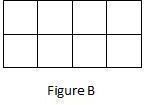
5. Without gaps or overlaps, cover Figure B with the “unit squares”.
6. Count the number of “unit squares” used to cover the figure.
7. How many “unit squares” were used to cover the figure?
8. What is the area, in square units, of Figure B?
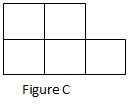
9. Without gaps or overlaps, cover Figure C with the “unit squares”.
10. Count the number of “unit squares” used to cover the figure.
11. How many “unit squares” were used to cover the figure?
12. What is the area, in square units, of Figure C?
Answers:
3. 4
4. 4 square units
7. 10
8. 10 square units
11. 5
12. 5 square units
Individual or Group Work:
-
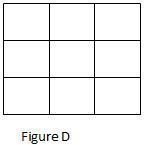
Without gaps or overlaps, cover Figure D with the “unit squares”.
-
Count the number of “unit squares” used to cover the figure.
-
How many “unit squares” were used to cover the figure?
-
What is the area, in square units, of Figure D?
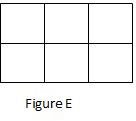
5. Without gaps or overlaps, cover Figure E with the “unit squares”.
6. Count the number of “unit squares” used to cover the figure.
7. How many “unit squares” were used to cover the figure?
8. What is the area, in square units, of Figure E?
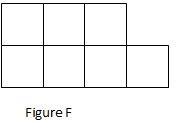
9. Without gaps or overlaps, cover Figure F with the “unit squares”.
10. Count the number of “unit squares” used to cover the figure.
11. How many “unit squares” were used to cover the figure?
12. What is the area, in square units, of Figure F?
Answers:
3. 9
4. square units
7. 6
8. 6 square units
11. 7
12. 7 square units
Students should be able to determine the area of geometric figures (squares, rectangles, and irregular figures) by counting the number of “unit squares” needed to cover the figures.
Download this Lesson
<strong>Finding the Area of Figures Using Unit Squares</strong>
This post is part of the series: Grade 3 Math Lessons on Geometric Measurement
This series of lessons covers the concepts of geometric measurement for 3rd grade students. Through these lessons, students will understand concepts of area and relate area to multiplication and addition. Fulfills Common Core objectives.
- Finding the Area of Figures using Unit Squares: Grade 3 Math Lesson
- Finding the Area of Figures using Unit Squares: 3rd Grade Math
- 3rd Grade Math: Finding the Area of Rectangular Figures using Multiplication
- Finding the Area of Rectangular Figures in Real World Mathematical Problems: Grade 3 Lesson
- Finding Area using a Model of the Distributive Property: Math Lesson for Grade 3
- Finding the Area with Decomposition and Addition: 3rd Grade Math Lesson with Assessment
